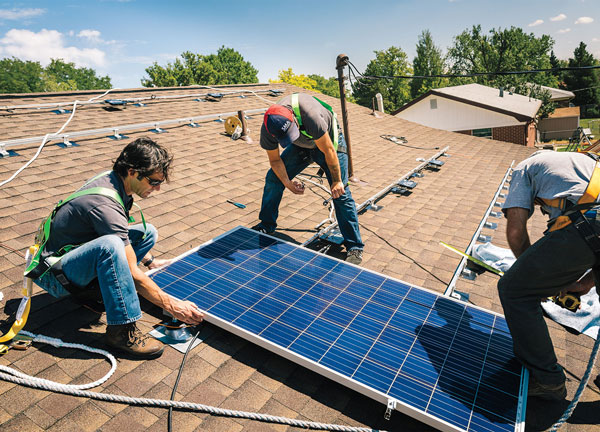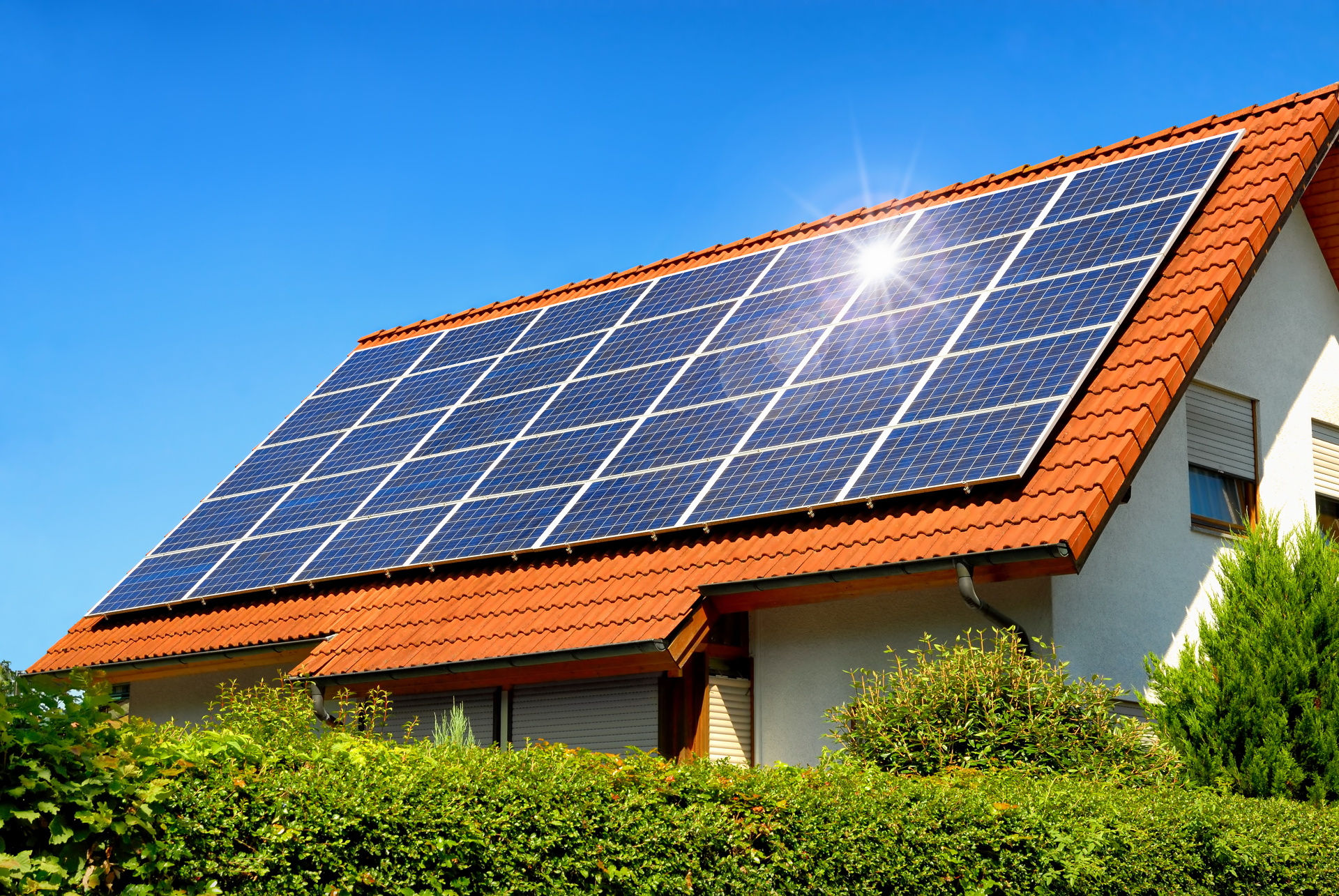Renewable Energy Solar Panels: Expert Setup Of Photovoltaic Systems Can Considerably Minimize Your Energy Expenses
Website Assessment and Preparation
Revealing the Land: Where Solar Dreams Begin
Before the sun's energy can be harnessed, a precise site evaluation should unfold. Picture strolling onto your property and questioning, "Is this spot truly the golden ticket for photovoltaic panels?" This is where science satisfies instinct. Examining the land includes more than simply looking for sunshine; it's about understanding how the environment will dance with your system throughout the year.
Secret Aspects in Website Examination
- Sunshine Direct exposure: Are shadows from trees, buildings, or chimneys lurking where you plan to set up? Even a small shadow can whisper away precious watts.
- Roofing System Orientation and Tilt: South-facing roofings typically steal the program, however east or west can still play their part perfectly. The angle of your panels can transform early morning chills into afternoon heat.
- Structural Stability: Is your roofing system a fortress prepared to support photovoltaic panels, or does it require some strengthening? This action is important to avoid surprises after installation.
- Space Schedule: Sometimes, the very best spot isn't on the roofing system at all. Ground-mounted systems offer flexibility but need a various sort of groundwork.
Preparing the Canvas: Website Preparedness
Once the perfect place is determined, preparation begins. Consider it as setting the stage for a grand performance. The roof may require repair work, or trees may require a gentle trim. Clearing debris and ensuring the surface area is clean are little however considerable actions that lead the way for optimal panel positioning.
Actions to Prepare Your Site
- Conduct an in-depth shading analysis using specialized tools or apps.
- Inspect and enhance the roofing structure, if essential.
- Clear barriers that might obstruct sunlight, including thick branches.
- Plan wiring paths and inverter positioning to optimize efficiency and safety.
- Obtain any essential approvals or approvals for structural modifications.
Why Does This Matter?
Think about the story of a homeowner who excitedly installed panels without comprehensive site evaluation, just to find power generation inconsistent. The offender? A single chimney casting a shadow in the late afternoon, reducing output when energy need peaks. This illustrates an essential reality: the sun is predictable, however our environments are not. Every nuance matters.
In the end, the preparation stage is the quiet designer of success. It turns raw capacity into tangible, clean energy. When contemplating solar panel installation, ask yourself: Have I really read my residential or commercial property's solar story? Because because story lies the secret to sustainable power.
Exploring the Varieties of Solar Panels
Ever stood on a roofing system and questioned why some photovoltaic panels gleam like black mirrors while others shimmer with a bluish tint? The secret lies in their product composition, Certified Solar Panel Installers which drastically influences efficiency and installation strategies. 3 primary types dominate the marketplace:
- Monocrystalline panels: Crafted from a single crystal structure, these are the champions of performance, typically boasting rates above 20%. Their consistent black appearance is sleek however requires exact setup to take full advantage of efficiency.
- Polycrystalline panels: Made from several silicon pieces melted together, they offer a speckled blue look. A little less efficient than monocrystalline but normally more flexible in setup nuances.
- Thin-film panels: These are flexible, lightweight, and less meddlesome, thanks to their amorphous silicon or other products. Their lower effectiveness means more surface area is needed-- a considerable factor to consider when planning roof layouts.
Product Matters: Beyond Silicon
Silicon rules supreme, but did you know that the substrate and encapsulants can make or break the panel's durability? Glass with high transmittance, resilient polymers, and advanced anti-reflective finishes are subtle heroes. A badly chosen encapsulant can trigger premature yellowing, sapping energy output over time. It's a quiet battle of products that many installers neglect till performance dips.
Installation Insights: What the Pros Know
When mounting panels, the weight difference between types matters. Thin-film panels weigh less, easing tension on older roofs. However, their bigger size needs more careful circuitry and support style. Monocrystalline panels, though much heavier, can be spaced tighter, optimizing roof property. Here's a fast rundown of specialist tips:
- Validate panel weight and roofing system load capability before choice.
- Think about thermal growth rates of panel materials; mismatches can trigger micro-cracks.
- Select mounting hardware compatible with the panel's frame material to prevent corrosion.
- Use reflective backing products to enhance light capture in shaded spots.
Enjoyable Truth: The Anecdote of the "Blue vs. Black" Dispute
One installer once informed me about a client who demanded blue panels purely for looks. Months later, the client discovered a slight dip in energy production compared to their neighbor's black monocrystalline setup. This story echoes an universal truth: in some cases, what looks great does not constantly carry out finest. With the right angle and setup, even polycrystalline can shine.
Setup Process and Methods
Picture hoisting a panel onto your roofing for the really first time. The dance between accuracy and patience begins here. The solar panel setup procedure isn't just about bolts and brackets; it's a careful orchestration of angles, weights, and weather condition considerations. Have you ever contemplated how a small misalignment can shave off precious energy production? That fraction of a degree can be the distinction in between a thriving system and one that underperforms.
Step-by-Step Installation Insights
- Site Assessment: Before any devices touches your roofing, the assessment phase includes evaluating roofing orientation, shading aspects, and structural stability. This step goes beyond the surface-- literally. Understanding the roof's load capacity is important to prevent surprises later.
- Installing Setup: The choice between flush mounts and adjustable racks depends upon your roofing system type and sun direct exposure. Adjustable racks use a trump card-- fine-tuning angles seasonally to record maximum sunshine.
- Panel Placement: Panels should be spaced and protected to prevent thermal growth concerns and water pooling. Ignoring this can lead to warped panels or leakages, a subtle however pricey oversight.
- Electrical Connections: Wiring is where lots of setups fail. Utilizing appropriate gauge wires, safe adapters, and waterproof junction boxes guarantees longevity and safety. Ever seen a panel system underperform because of loose or corroded connections? It's more common than you may believe.
- System Testing: Performing a comprehensive efficiency check post-installation can capture problems before they escalate. Voltage tests, inverter functionality, and monitoring software application calibration are non-negotiable actions.
Pro Tips for Optimal Installation
- Consider microinverters or power optimizers to alleviate shading impacts and make the most of output from each panel.
- Integrate a grounding system thoroughly to prevent electrical sound and secure against lightning strikes.
- Use corrosion-resistant mounting hardware, especially in coastal or humid environments, to extend system lifespan.
- Apply weatherproof sealants at every roofing system penetration to avoid future leakages-- a small lapse can cause decades of water damage.

The Often-Overlooked Aspects
Numerous installers ignore the subtle impact of roof pitch and seasonal sun angle variations. For circumstances, a flat roofing installation may take advantage of slanted racks angled differently for winter and summer season. This flexibility can improve yearly energy yield by as much as 15%. Also, the synergy in between panel spacing and airflow is crucial. Panels that are too close together can trap heat, decreasing performance-- a nuance that only seasoned installers appreciate.
| Installation Aspect | Professional Insight | Common Oversight |
|---|---|---|
| Installing Type | Adjustable racks make it possible for seasonal angle changes. | Using set mounts on flat roofs. |
| Electrical Electrical wiring | Appropriate gauge and waterproof adapters ensure durability. | Overlooking waterproofing results in deterioration. |
| Panel Spacing | Sufficient gap enables heat dissipation. | Panels too close cause getting too hot. |
Precaution and Finest Practices for Photovoltaic Panel Setup

Ever attempted balancing on a roofing while juggling sharp-edged solar panels? It's not exactly a Sunday stroll. The most neglected aspect throughout photovoltaic panel installation is the careful attention to safety protocols that keep installers alive and well. The dance in between weather condition, electrical energy, and heights demands a near-militant discipline.
Important Security Gear: Your First Line of Defense
- Non-slip footwear: Slipping on a slick roofing can turn a routine task into a tragedy.
- Harnesses and lanyards: Appropriate fall arrest systems are non-negotiable.
- Insulated gloves: Safeguard against electrical shocks, especially when handling live wires.
- Protective eyewear: Guard eyes from UV rays, dust, and flying particles.
- Construction hats: Roofing work implies unexpected bumps-- don't undervalue falling items.
One seasoned installer once shared how a basic gust of wind nearly sent out a panel-- and himself-- plunging. That close call enhanced why double-checking harness connections isn't just procedure; it's survival.
Pre-Installation Planning: A Plan for Safety
Before stepping on the roofing, an extensive site inspection is important. Are the shingles fragile? Is the roof pitch dangerously steep? These aspects determine the sort of safety equipment needed and the installation approach. Overlooking them invites disaster.
Think about the electrical design too. Solar arrays connect to inverters, breakers, and house electrical wiring-- all potential shock hazards if mishandled. Identifying circuits plainly and de-energizing systems when possible minimizes risk significantly.
Best Practices to Prevent Common Threats
- Weather condition check: Prevent installation during rain, snow, or high winds. Wetness integrated with electrical energy is a recipe for catastrophe.
- Tool management: Secure tools with lanyards or tool belts. Dropped tools can injure individuals below or damage panels.
- Two-person guideline: Never ever work alone on roofs. An additional pair of eyes and hands can be a lifesaver.
- Clear interaction: Establish hand signals or walkie-talkie systems when verbal cues get lost in wind or range.
- Panel handling technique: Constantly lift panels with knees, not back, to avoid stress and maintain control.
Electrical Safety: Beyond the Fundamentals
Numerous undervalue the intricacy of DC voltage produced by panels. Unlike air conditioner, DC arcs are harder to snuff out, making arc fault protection gadgets important. Likewise, comprehending the wiring schematic completely before touching anything can avoid electrocution.
| Security Element | Pro Suggestion | Why It Matters |
|---|---|---|
| Utilize Examination | Look for wear before each usage | Used harnesses can fail during a fall |
| Panel Orientation | Plan layout to reduce awkward lifts | Avoids muscle injuries and panel damage |
| Electrical Isolation | Use lockout/tagout procedures | Ensures power is off throughout circuitry |
Does the thought of dealing with high-voltage DC make you pause? It should. Appreciating the invisible forces in play and preparing for them with the ideal security state of mind transforms a dangerous task into a workable one.